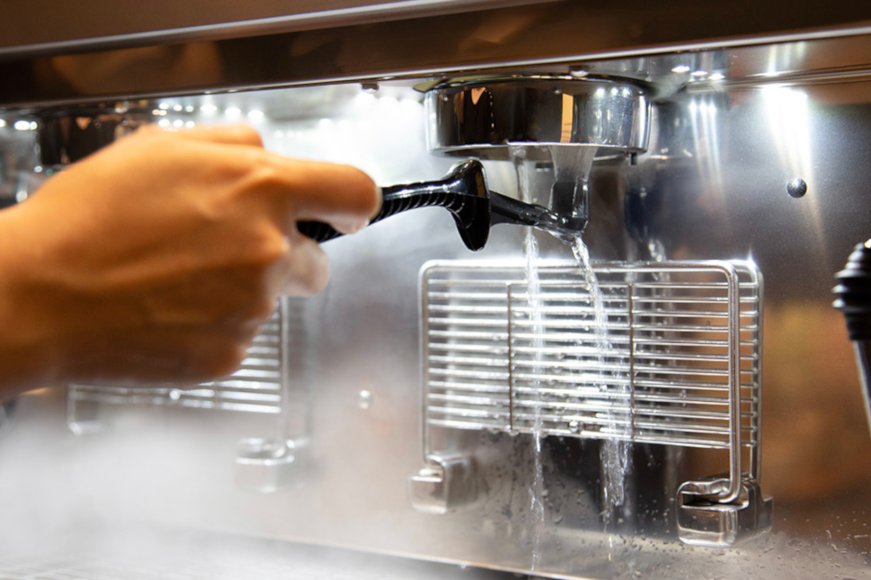- Δωρεάν Μεταφορικά για αγορές άνω των 69€
Γιατί χρειάζεται καθάρισμα η μηχανή espresso;

Υπάρχουν αρκετοί παράγοντες που συμβάλλουν στην παρασκευή ενός καφέ υψηλών προδιαγραφών. Το γευστικό αποτέλεσμα στο φλυτζάνι μας μπορεί να επηρεάζεται από το είδος του καφέ που επιλέξαμε και τον τρόπο παρασκευής του, όπως επίσης από τις δυνατότητες του εξοπλισμού που διαθέτουμε και την ικανότητα του barista. Όμως, ένας σταθερός παράγοντας που επηρεάζει την ποιότητα του καφέ παρόλο που συχνά έχουμε την τάση να παραβλέπουμε, είναι η καθαριότητα του εξοπλισμού.
Ακόμα κι ένας καφές υψηλής ποιότητας δεν μπορεί ν' αντισταθμίσει το χαμηλό γευστικό αποτέλεσμα που προσφέρει μια βρώμικη μηχανή. Οι κόκκοι του καφέ περιέχουν αιθέρια έλαια, τα οποία βέβαια μας προσφέρουν την πλούσια κρέμα και την υπέροχη γεύση που κορυφώνουν τον espresso μας, αλλά ταυτόχρονα μπορούν να αλλοιώσουν τη γεύση του καφέ, προσθέτοντας μια πικράδα. Τα έλαια του καφέ επικάθονται και συσσωρεύονται σε διάφορα σημεία της μηχανής όπως το κλείστρο, το φίλτρο, την κεφαλή του γκρουπ κ.α. Με την πάροδο του χρόνου τα έλαια αυτά δημιουργούν μια μεμβράνη στο φίλτρο και στο κλείστρο (βλ.εικόνα). Η διαδικασία απομάκρυνσης των ελαίων και των υπολειμμάτων καφέ ονομάζεται “backflushing”.
Επιπλέον, η συσσώρευση των αλάτων του νερού επηρεάζει αφενός τη γεύση του καφέ και αφετέρου την απόδοση της μηχανής (μείωση της πίεσης). Η δημιουργία αλάτων είναι η συχνότερη βλάβη που παρουσιάζεται στις μηχανές espresso, συχνά με αρκετά μεγάλο κόστος επιδιόρθωσης. Η διαδικασία απομάκρυνσης των αλάτων ονομάζεται “αφαλάτωση" (Descaling). Στις μηχανές επαγγελματικής χρήσης η αφαλάτωση γίνεται με την χρήση ειδικών φίλτρων που τοποθετούνται στην παροχή νερού της μηχανής. Στις μηχανές οικιακής χρήσης η αφαλάτωση θα πρέπει να γίνεται από τον χειριστή με τη χρήση κατάλληλου αφαλατικού προϊόντος.
Διατηρώντας τη μηχανή του espresso καθαρή τόσο στο εσωτερικό της όσο και στο εξωτερικό της, όχι μόνο θα σας βοηθήσει να διατηρήσετε υψηλή την ποιότητα του εσπρέσο σας, αλλά και να παρατείνετε τη διάρκεια ζωής της μηχανής χωρίς βλάβες και μεγάλο κόστος συντήρησης.

